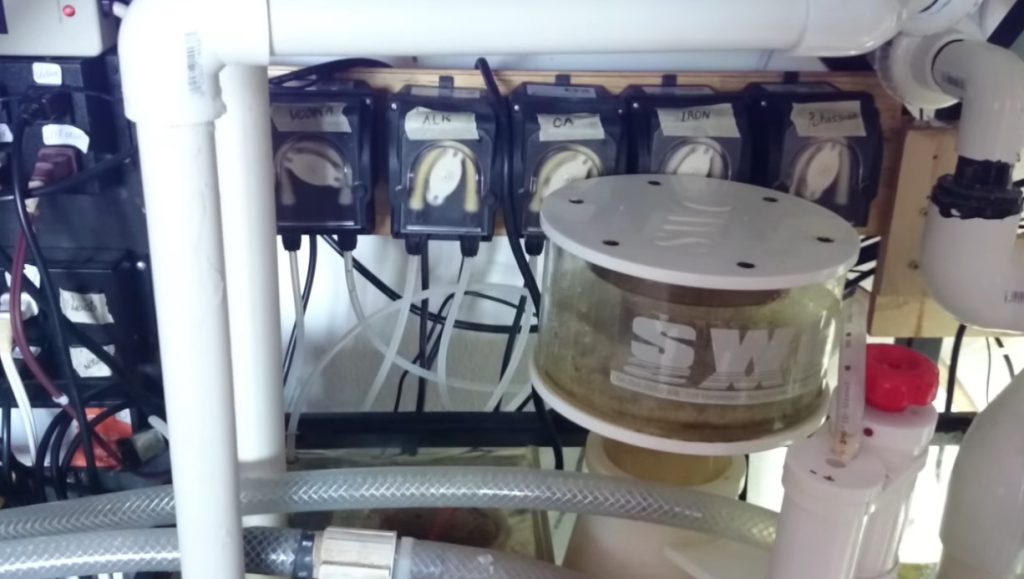Carbon Dosing Freshwater Aquarium
Carbon dosing is a popular technique used by freshwater aquarium enthusiasts to enhance water quality and promote the growth of beneficial bacteria. By adding a carbon source to the aquarium, hobbyists can encourage the growth of nitrifying bacteria, which convert harmful ammonia and nitrite into less toxic nitrate. This process, known as the nitrogen cycle, is essential for maintaining a healthy and stable aquarium environment.
But what exactly is carbon dosing, how does it work, and what are the benefits and considerations involved? In this article, we will explore the ins and outs of carbon dosing in freshwater aquariums, from its purpose to different methods and frequently asked questions.
The Purpose of Carbon Dosing
The primary purpose of carbon dosing in a freshwater aquarium is to support the growth of beneficial bacteria. These bacteria play a crucial role in the nitrogen cycle by converting toxic ammonia and nitrite into less harmful nitrate. By providing a readily available carbon source, such as liquid carbon or organic compounds, aquarium owners can fuel the development of these important bacteria.

Benefits of Carbon Dosing
1. Improved Water Quality: Carbon dosing helps to eliminate excess nutrients, such as ammonia and nitrite, by promoting the growth of bacteria that convert them into less toxic forms. This can lead to clearer, odor-free water and a healthier environment for aquarium inhabitants.
2. Reduces Algae Growth: Algae thrive on excess nutrients in the water, including ammonia and nitrate. By actively promoting the growth of beneficial bacteria that consume these nutrients, carbon dosing can help to reduce or eliminate algae blooms.
3. Enhanced Biological Filtration: The bacteria that proliferate due to carbon dosing provide additional biological filtration, increasing the capacity of the aquarium’s filtration system. This can result in a more stable and resilient ecosystem.
Methods of Carbon Dosing
There are several methods of carbon dosing available to freshwater aquarium owners. Each method has its pros and cons, so it’s essential to choose the one that best suits your aquarium setup and goals. Here are some popular options:
1. Liquid Carbon: Liquid carbon supplements, such as glutaraldehyde-based products, provide a simple and convenient way to dose carbon into the aquarium. These products can be added directly to the water, where they serve as a food source for bacteria. It’s important to follow the manufacturer’s instructions carefully when using liquid carbon.
2. CO2 Injection: Carbon dioxide (CO2) injection is another method commonly used in planted freshwater aquariums. In addition to promoting plant growth, CO2 can also serve as a carbon source for beneficial bacteria. CO2 injection systems can be more complex and require careful monitoring to avoid overdosing.
3. Organic Carbon Sources: Some aquarium owners prefer to use organic compounds as a carbon source, such as vodka, vinegar, or sugar. These substances can be added in small quantities directly to the aquarium or as part of a specialized reactor setup. Organic carbon dosing methods require careful monitoring to prevent overdosing, as excessive levels can be harmful to aquarium inhabitants.
Frequently Asked Questions
Q: Is carbon dosing suitable for all freshwater aquariums?
A: Carbon dosing can be beneficial for most types of freshwater aquariums, especially those with high bioloads or issues with excess nutrients or algae. However, it’s important to consider the specific needs of your aquarium and its inhabitants before implementing carbon dosing. Some sensitive species or low-nutrient systems may not require carbon dosing or may benefit from alternative methods.
Q: How much carbon should I dose?
A: The dosage of carbon needed for your aquarium will depend on various factors, including its size, stock, and nutrient levels. It’s essential to start with a low dosage and monitor water parameters closely before gradually increasing the amount. It’s recommended to consult with experienced aquarium hobbyists or professionals for guidance specific to your setup.
Q: Are there any risks or considerations with carbon dosing?
A: While carbon dosing can have numerous benefits, it’s crucial to be aware of some potential risks. High doses of carbon can lead to a drop in pH or dissolved oxygen levels, which can be harmful to aquarium inhabitants. Additionally, excessive carbon dosing can result in bacterial blooms or imbalances in the nitrogen cycle. Regular testing and careful monitoring are essential to prevent negative impacts on water quality and fish health.
Final Thoughts
Carbon dosing can be a valuable tool for freshwater aquarium owners looking to improve water quality, reduce algae, and enhance biological filtration. By promoting the growth of beneficial bacteria, carbon dosing helps to establish a balanced and thriving aquatic ecosystem. However, it’s essential to proceed with caution, monitor water parameters closely, and adjust dosage as necessary. Consulting with experienced hobbyists or professionals can provide valuable guidance and ensure the success of your carbon dosing endeavors in the freshwater aquarium.






